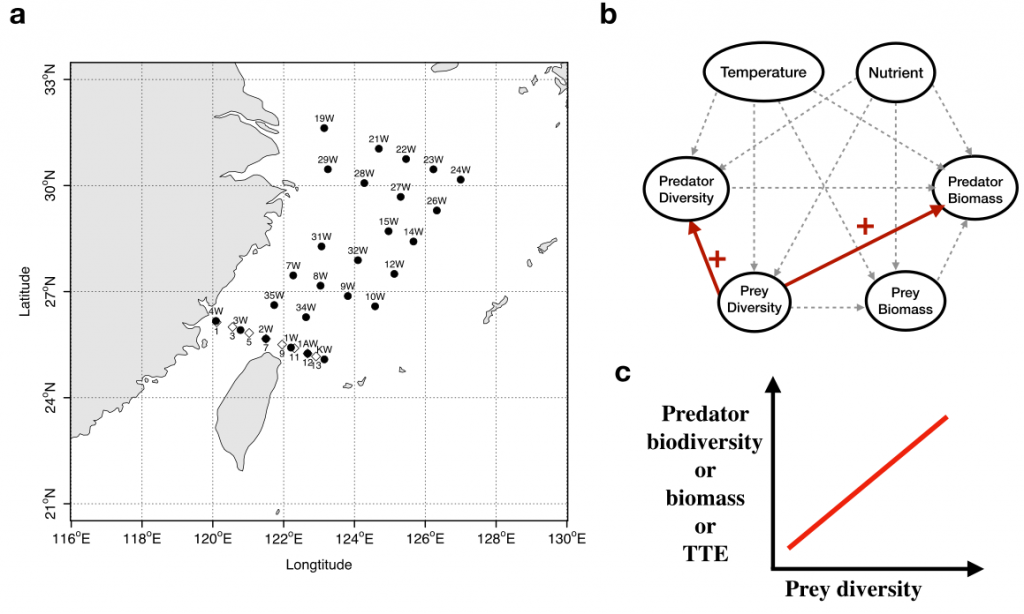Predator and prey biodiversity relationship and its consequences on marine ecosystem functioning—Interplay between nanoflagellates and bacterioplankton
Jinny Yang and Chih-hao Hsieh
Institute of Oceanography, National Taiwan University
Understanding the biodiversity effects across trophic levels via predator-prey interactions is an important issue in ecology. However, very few studies on this topic have been conducted for marine microorganisms. In the marine ecosystem, the predator-prey interactions between nanoflagellates and bacteria profoundly influence biogeochemical cycling and trophic transfer efficiency through the microbial loop. The research team therefore explored how microbial biodiversities of mutiple trophic levels affect ecosystem functioning in the marine ecosystem.
The team at the Institute of Oceanography in National Taiwan University, led by master student Jinny Yang and Prof. Chih-hao Hsieh, revealed new findings in the field. They collected samples over the East China Sea using the R/V Ocean Researcher I and II in different seasons during 2014-2015 (Figure 1a). Protist and bacterial communities were simultaneously obtained using Next Generation Sequencing, flow cytometry and fluoresce microscope. A set of environmental variables were measured, including temperature, salinity and nutrients. They then investigated the predator (heterotrophic nanoflagellates) and prey (bacteria) biodiversity relationship and its consequences on marine ecosystem functioning, accounting for the environmental effects (Figure 1b).
It is found that diversity and biomass of predators, and trophic transfer efficiency (TTE) were enhanced with increasing prey diversity (Figure 1c). These findings were in line with two hypotheses: (i) more diverse prey assemblages may contain a greater variety of essential biomolecules which benefit generalist predators, known as “the balance diet hypothesis”, and (ii) higher prey diversity may provide a wider range of niche breath for specialist predators and promotes predator consumption and production via the niche partitioning effect.
This study demonstrates a significant trophic interaction effect on microbial communities in the marine ecosystems, and also proves the importance of multi-trophic biodiversity effects on ecosystem functioning in natural systems. This work is published in The ISME Journal (2018, May).
Figure 1. A conceptual scheme for exploring predator and prey biodiversity relationships and its effect on marine ecosystem functioning. Protists and bacteria from the East China Sea were collected (a), and their diversities and biomasses were analyzed while accounting for environmental factors (b). This study found that predator biodiversity and biomass, and trophic transfer efficiency (TTF) were positively correlated with prey diversity (c), indicating a niche partitioning effect among predators and supporting “the balance diet hypothesis”.
Reference:
Yang JW, Wu W, Gong G-C, Chong C-C and Hsieh C-H (2018) Predator and prey biodiversity relationship and consequences on marine ecosystem functioning-Interplay between nanoflagellates and bacterioplankton. ISME Journal 12: 1532-1542.











